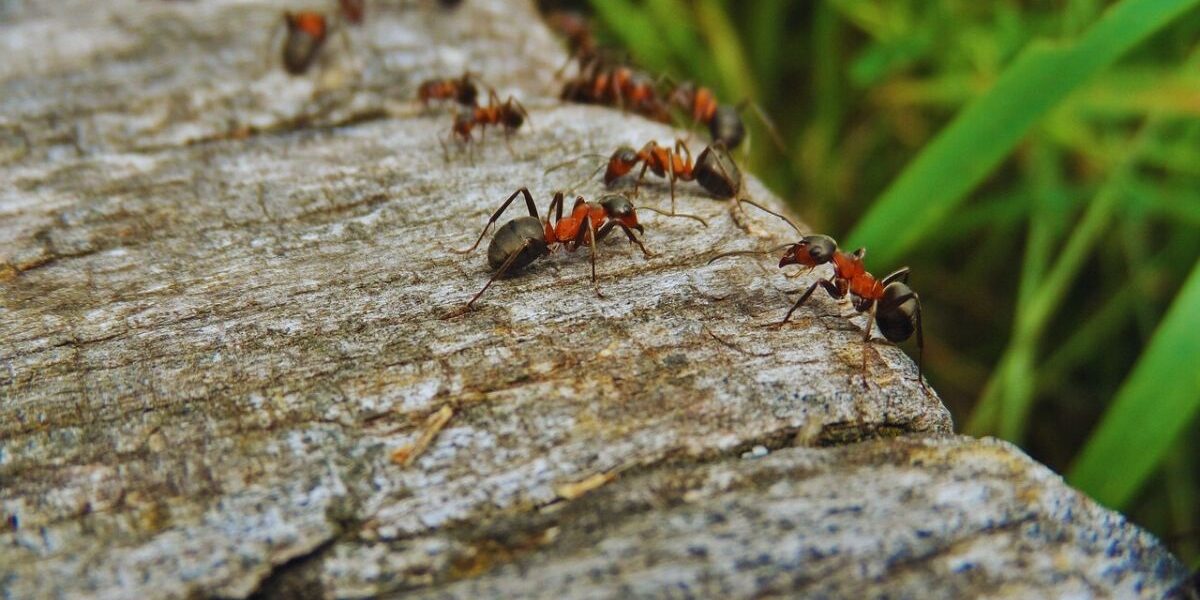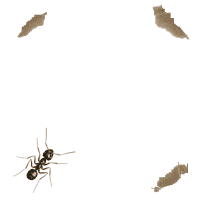Carpenter Ants Control

Carpenter ants are insect pests that deserve our attention, carpenter ants nest in decaying or dead wood for example dead branches, stumps, trees, and logs. Some species are known to build their nest in the soil however building materials that are weakened by moisture will attract these ants. Carpenter ants don’t consume soft or damaged wood but bore through it to create tunnels for easy travel from the nest to the food source.
Carpenter Ants Biology
Carpenter ants go through four stages, egg, larva, pupa, and adult, The pupae are enclosed in cocoons that resemble eggs. The larvae are white, legless, and look like maggots. The adult carpenter ants are generally dark brown or black, they possess a waist with one node (petiole) and a thorax. The worker ants are black or red and black, workers range in size from 3/8 to 1/2 inch long and live up to seven years. The queen can live up to 10 years.
How to Inspect for Carpenter Ants
Inspect wood areas that hold moisture around your home for example around window and door frames, wooden structures, ( abors and gazebos), fences, and woodpiles. Wet or dead wood, plumbing under bathroom and kitchen sinks. Look for ant trails, and damaged wood that has smooth gallries and openings or ants activity. You may also hear clicking noises inside your walls and there may also be the presence of sawdust, you may also come across discarded ant wings.
Note: It is best to consider calling first a professional company to do the job for you.
How to Control Carpenter Ants Outdoors
Controlling carpenter ants indoors requires that they first be controlled outdoors, remove all water-soaked damaged wood and replace with solid sound wood, don’t keep woodpiles close to your home, and Remove all food sources. Make sure that your garbage storage area is clean at all times. Remove all outdoor water sources for example containers or other objects that hold water, even holes or sinks in the ground my hold water so fill in holes with soil and level sinks or depressions. Remove and dispose of tree stumps. Woodpiles should be stored in a dry covered area, Trim back tree limbs and branches that make contact with your home because carpenter ants will use the limbs and branches as a bridge to get onto building structures followed by seeking to locate an entry point indoors.
Seal off all entry points for example cracks and crevices with silicone caulk, and seal small openings that may be around door and window frames. To control carpenter ants outdoors apply Talstar or Termidor SC, Termirdor is a non-repellent residual spray that carpenter ants won’t feel, smell, or taste. Once the area is treated the ants unknowingly will walk through the treated area picking up the poison on their body and carrying the poison back to the colony.
This poison will then spread to the entire colony eventually killing the colony within 1-3 days, to treat outdoor areas apply Termidor SC with water to a 1-gallon hand pump sprayer according to the manufacturer’s directions. Once the insecticide is mixed and ready to spray walk around your home spray a barrier that extends about 2-3 feet up the foundation’s wall and the seem distance out from the foundation on the ground. Apply the insecticide to window and door frames, around pipes and pipe bibs, utility cable openings, and other places where ants have been seen trailing. Apply Termidor SC once every 6 months.
How to Control Carpenter Ants Indoors
If you discover that carpenter ants got indoors the first line of defense is to do a thorough inspection to locate entry points and if there is any damage or dead wood indoors, if dead wood is discovered then remove and replace the damaged wood.
Inspect areas around the door and window frames and if there are openings then seal with silicone caulk, Treat areas indoors with Taurus SC, mix Taurus Sc in with water to a 1-gallon hand pump sprayer according to the manufacturer’s directions. Once the insecticide is mixed and ready to spray apply it to baseboards, apply the spray directly into cracks and crevices, under appliances, around door frames, window frames, and in areas where utilities (cables, pipes, wires) enter into the structure and other areas where ants have been entering your structure. Spray in the artic around exposed wood and pipes. Treat areas around the door and window frames with Doxem NXT. Wall voids can be treated with insect dust such as Delta Dust. Add dust insecticide to a duster to get into wall voids like behind electrical outlets.
In the case of heavy infestation the wall void needs to be opened up, one way to open the wall is to cut away pieces of sheetrock, and the second method is to drill holes in the sheetrock into the infested area. The holes should be 1/8 wide and extend 2-6 feet on either side where ants are entering the structure. If the area to be treated is small then you can use a ready-to-use foam product that comes equipped with a flexible hose, for large areas will require a foaming agent and a forming device to eliminate carpenter ants or the entire ant colony.
Natural Ways to Get Rid of Carpenter Ants
- Baking Soda and Sugar-Mix equal parts baking soda and powdered sugar. Strategically place this mixture in shallow dishes in the locations with the most ant traffic. These can also be placed outside, particularly near doors and windows. The sugar in the mixture attracts the ants, while the baking soda naturally kills them.
- Water and Soap-Mix one part dish soap to two parts water in a 32 oz spray bottle. Spray as needed to kill ants and eliminate their pheromone trails. Repeat treatment until the ants no longer return.
- Essential oils- Essential oils can be used to disrupt these trails, which ultimately disorients and deters ants. Lemongrass, peppermint, clove, cedarwood, tea tree, orange, and lemon oil are all effective. Dampen a cotton ball or kitchen towel with an essential oil. Use this to wipe baseboards, windowsills, the perimeters of countertops,, any potential entry points even door frames. Repeat every day until the ant population disappears. Essential oils can also be diluted with a carrier oil to create a natural ant-killing spray.
In case you missed it here are other posts on ant control
Conclusion
Carpenter ants treatment may require some work on your path depending on the size of the infestation but the good news is with the right knowledge you can bring control, this guide will equip you with all that you need to strike back for carpenter ant control or if you prefer to call in the professional that will do the job for you.











Hi Norman, I used to have ants infestation in my home before and I know they can be annoying. But can you tell me what can happen if you just don’t do anything? What is the damage they can cause in your house? I have already removed the wood around the house, but can still see some trails forming outside. As long as they stay outside, I am happy with it, but want to understand if they can cause a bigger problem.
Thanks!
Well, we know the reason for pest home invasion is seeking water and a food source along with seeking shelter and a place to raise their young.
Ants can transport several different food-borne illnesses, including some as serious as salmonella. Because of this fact we should do all we can to deter them. indoors and outdoors as well
Creating a pest-free environment involves a combination of strategies, including the use of ornamental plants and structural pest control. Certain plants like marigolds, lavender, and mint act as natural repellents for pests like mosquitoes and ants. Incorporating these plants into landscaping can deter pests while adding aesthetic appeal. Additionally, implementing structural pest control measures such as sealing cracks, installing screens, and maintaining cleanliness can prevent pests from entering buildings. Regular inspection and prompt action against infestations further contribute to a pest-free environment, promoting health and comfort for inhabitants while reducing reliance on chemical pesticides.
Thanks so much for stopping by and offering your advice on pest control.